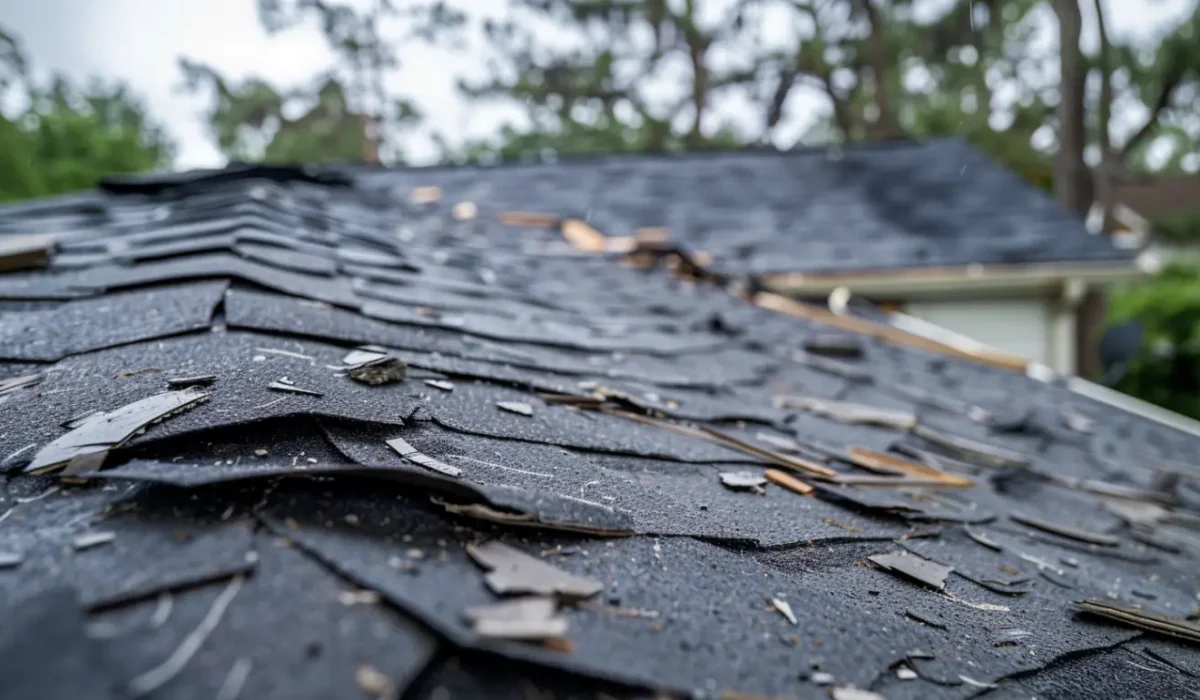In Grapevine, TX, hailstorms are a fact of life. While they may pass quickly, their impact on your home can be long-lasting—especially when it comes to your roof. Hail can bruise shingles, dislodge granules, and create leaks that lead to major structural issues if not addressed promptly. Knowing how to handle roof damage after a hailstorm is crucial to protecting your home, your finances, and your peace of mind.
Whether you’re dealing with minor dents or major destruction, here’s a step-by-step guide to help you take swift, smart action after a hailstorm hits.
Step 1: Perform a Safe Visual Inspection
Once the storm has passed and it’s safe to go outside, begin with a visual inspection of your property from the ground. Walk around your home and look for:
- Missing or visibly damaged shingles
- Shingle granules collected in gutters or at the base of downspouts
- Dented gutters, downspouts, or siding
- Cracked skylights or broken vents
- Hail impacts on soft metals like roof flashing or HVAC caps
If you see signs of damage to areas like gutters or siding, there’s a strong chance your roof has been affected too—even if the damage isn’t immediately obvious.
Avoid climbing onto your roof yourself; hidden damage and slick surfaces can pose serious safety hazards. Instead, move on to the next step.
Step 2: Contact a Professional Roofer for an Inspection
Don’t wait for leaks to develop before calling a professional. Hail damage isn’t always visible from the ground, and even small issues can evolve into major problems over time.
Reach out to a local roofing expert like KangaRoof, serving Grapevine, TX. With industry certifications like Owens Corning Preferred Contractor and CertainTeed Master Shingle Applicator, KangaRoof’s team is trained to identify hail damage in all its forms—from fractured shingle mats to punctured underlayment.
A timely inspection will give you the documentation you need to file an insurance claim and prevent costly interior water damage.
Step 3: Document All Damage
While your roofer will take detailed notes and photographs, you should also document the damage for your own records. Take pictures of:
- Roof sections from multiple angles
- Hailstones (if still visible) next to a ruler or coin for scale
- Damaged gutters, siding, or windows
- Interior ceiling stains or leaks
Having a comprehensive set of before-and-after photos will strengthen your insurance claim and support any supplemental requests your contractor may file.
Step 4: File an Insurance Claim Promptly
Most insurance policies require you to file claims within a certain time frame—often within one year of the storm, but some policies are stricter. Contact your insurance provider as soon as you have the inspection report and documentation.
Your insurance company will schedule an adjuster to visit your home and evaluate the damage. It’s important to have your roofer on-site during this visit to ensure that all damage is recognized and properly assessed.
Step 5: Review the Insurance Estimate
After the adjuster completes their inspection, you’ll receive an estimate outlining what your insurance will cover. Review this carefully, preferably with your roofing contractor. Many initial estimates miss hidden damage or underestimate costs due to local building codes or material pricing.
If necessary, your roofer can submit a supplement to the insurance company to adjust the scope of the work and ensure full compensation.
Step 6: Begin Roof Repairs or Replacement
Once the claim is approved, your contractor can schedule the repairs or complete replacement. In Grapevine’s hail-prone climate, consider upgrading to impact-resistant shingles like those offered by Owens Corning. These shingles are engineered to withstand future hail events and may even qualify you for discounts on your homeowners insurance.
Your roofer will also ensure that the entire roofing system—flashing, underlayment, ventilation, and more—is restored to current code and optimal performance.
Step 7: Protect Against Future Storms
While no roof is completely immune to hail, there are steps you can take to reduce future risk:
- Schedule annual roof inspections
- Keep gutters and downspouts clear
- Trim overhanging branches
- Consider adding ridge vents and proper attic insulation
- Choose Class 4 impact-resistant roofing materials
Maintaining your roof and working with a professional contractor ensures your home is always ready for whatever Texas weather throws your way.
Final Thoughts
Hailstorms may be out of your control—but how you respond to them isn’t. Acting quickly, hiring a qualified roofer, and understanding the insurance process are key to minimizing costs and protecting your home.
If you’ve recently experienced a hailstorm in Grapevine, TX, don’t wait for a leak to appear. Call KangaRoof today for a professional inspection and guidance through the claims process.
Read also our blog: Why Metal Roofing Is Gaining Popularity in 2025
